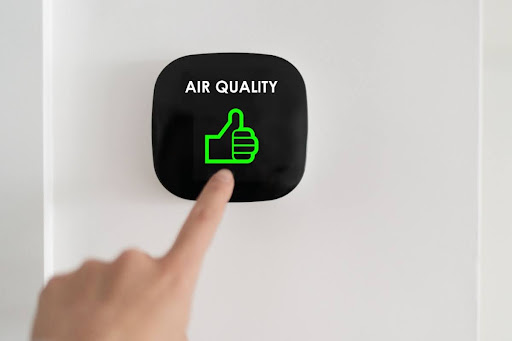Have you ever found yourself asking, “Why is my indoor air quality so bad?” You’re not alone. Many of us spend a significant portion of our day indoors, assuming we’re shielded from the pollutants and allergens of the outside world. However, the reality is that the air inside our homes can be worse than the air outside. This can lead to a variety of health issues, from minor irritations like coughing and itchy eyes to more serious conditions. In this blog, we’ll explore the common indoor air pollutants that may be compromising your health and how you can improve the air quality in your home.
Common Indoor Air Pollutants
To truly understand and improve your home’s indoor air quality, it’s essential to identify the culprits of indoor air pollution. Believe it or not, your home can be three to five times more polluted than outdoor air, largely due to a variety of indoor contaminants. Recognizing these pollutants is the first step toward creating a healthier living environment.
Dust Mites
Dust mites are one of the most common indoor air pollutants. These tiny creatures thrive in warm, humid environments and are a common fixture in most homes. Dust mites and their waste products can trigger allergies and asthma, which can make them a potential key factor in why your indoor air quality is so bad.
Carbon Monoxide
This colorless, odorless gas can accumulate to dangerous levels in poorly ventilated areas. Sources include gas space heaters, wood stoves, and automobile exhaust from attached garages. Exposure to carbon monoxide can cause chronic health issues and even be fatal, underscoring the importance of proper air movement and ventilation in maintaining indoor air quality.
Volatile Organic Compounds (VOCs)
VOCs are emitted by a variety of household products, including paints, cleaning supplies, and air fresheners. These compounds can have short- and long-term adverse health effects on the central nervous system and other organs, making them a silent contributor to why your indoor air quality is so bad.
Mold and Mildew
Mold and mildew are known to thrive in damp, humid conditions. They release spores into the air, which can cause respiratory infections, aggravate allergies, and exacerbate asthma. Poor air quality is often directly linked to the presence of these biological pollutants in the home.
Radon
Radon is a radioactive gas that originates from the natural decay of uranium in the soil beneath homes. It can enter through cracks in the foundation, becoming trapped and accumulating to harmful levels. Exposure to radon is a leading cause of lung cancer among non-smokers, highlighting the importance of testing and mitigation in ensuring safe indoor air quality.
Why Is Your Indoor Air Quality So Bad?
Several factors can contribute to poor indoor air quality. These include inadequate ventilation, which can trap pollutants inside, the use of solid fuels for cooking and heating, and the presence of household air pollution from cleaning agents, building materials, and other sources. Understanding these risk factors is vital in identifying and addressing the root causes of why your indoor air quality is so bad.
Steps to Improve Your Indoor Air Quality
Now that you know the usual causes of indoor air pollution, let’s discuss how you can make the air in your home cleaner and safer for your family to breathe.
Ensure Proper Ventilation
One of the most effective ways to improve indoor air quality in your living space is to ensure proper ventilation. This helps dilute and remove indoor pollutants, which can reduce the risk of health problems associated with poor air quality. Consider installing energy-efficient ventilation systems that not only enhance air quality but also contribute to a more sustainable living environment.
Use Air Purifiers
Air purifiers can greatly reduce the concentration of airborne pollutants in your home, especially in rooms where ventilation is limited. Look for units with HEPA filters that can capture fine particulate matter, pollen, pet dander, and other pollutants.
Reduce the Use of VOC-Emitting Products
Minimize the use of products that emit volatile organic compounds (VOCs) inside your home. Opt for natural or low-VOC paints, cleaning products, and building materials to help reduce your exposure to these harmful pollutants.
Schedule Regular Maintenance for HVAC Systems
Regular maintenance of your HVAC systems is crucial in preventing the circulation of dust, mold spores, and other pollutants. If you’re in the Cayman Islands, Polar Bear Air Conditioning offers comprehensive air conditioning services designed to keep your systems running efficiently and your indoor air clean.
Schedule Your Indoor Air Quality Services Today!
So, why is your indoor air quality so bad? Hopefully, you now have a better answer to this question. By recognizing the common indoor air pollutants and taking assertive measures to alleviate them, we can significantly improve the air we breathe indoors. Whether it’s through regular maintenance of HVAC systems, improving ventilation, or using air purifiers, each action you take can lead to a healthier home.
Don’t hesitate to reach out to Polar Bear Air Conditioning. Our team of experts provides indoor air quality services in the Cayman Islands, offering solutions such as indoor air quality assessments that cater to your specific needs. Schedule your appointment today!


0 Comments